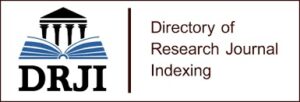Assessment of Infrastructure and Circulation Patterns among Rice Millers at Gbugbu Kwara State, Nigeria
The rice sector in Nigeria is seriously constrained by infrastructure deficit, poor circulation pattern and poor access to appropriate machinery that continuously diminishes efficiency and productivity. The study examined the impacts of infrastructural facilities and circulation pattern among clusters of rice millers at Gbugbu, Kwara State. Data for the study was obtained from both primary and secondary sources using structured questionnaire, and information from a list of registered rice processors in the state. The study purposively selected Edu local government because of their prominence in rice production. The study was carried out in the three districts of Edu local government. These include; Lafiagi, Tsaragi, and Tsonga districts, these three districts are synonymous with Gbugbu. The samples were obtained from small-scale rice millers who are members of the Rice Farmers Association of Nigeria (RIFAN). Using random sampling technique, 280 respondents (50%) were selected as sample from a population of 560 respondents. Descriptive statistics that include: frequency, percentage and mean were used to analyse the data obtained. The results on the socioeconomic characteristics of the rice millers shows that 48.0% (108) respondents were males while the females gender accounts for 52.0% (117). The result shows that 57.8% respondents indicated that rice milling is their primary occupation while 95 respondents representing 42.2% indicated that it is a secondary occupation. The results of level of adequacy of infrastructure and circulation pattern shows that four variables are above the average of 2.93 AICPI; these include adequacy of credit/financial institutions having 3.52 AICPI, adequacy of provision of milling equipment with 3.03 AICPI, adequacy of the electricity supply with 2.99 AICPI and adequacy of road network with 2.98 AICPI. The result on the level of significance of industrial cluster indices (SICI) showed that the highest SICI was recorded for the proximity of rice millers in the cluster, which had SICI of 4.10, followed closely by the availability of shared resources within the industrial cluster having SICI 3.89. The result obtained on level of impacts of human capital, infrastructure, and circulation pattern on rice production (IHCICPIs) shows that the highest IHCICPIs was recorded for the presence of proper storage facilities, having IHCICPIs 4.39, followed closely by good road connectivity having IHCICPIs 4.09. The results on The Impacts of Infrastructure Facilities and Circulation Pattern (IIFCP) shows that Tsonga Rice Millers hub (RMH) had the highest impacts having 3.64 IIFCP, which can be classified has good and thriving. Lafiagi (RMH) and Tsaragi (RMH) closely followed having IIFCP 3.30 and 3.51 respectively. The study concluded that infrastructure and circulation patterns among rice millers in the study area are adequate. The study recommend that architects and other building professional engaged in designing RMH should involve suitable design principles that meet users need. Also more consideration should be given to availability of appropriate infrastructure and good circulation pattern.
Keywords: Circulation Patterns, Impacts, Infrastructure, Industrial Cluster, Rice Millers, Nigeria.




















